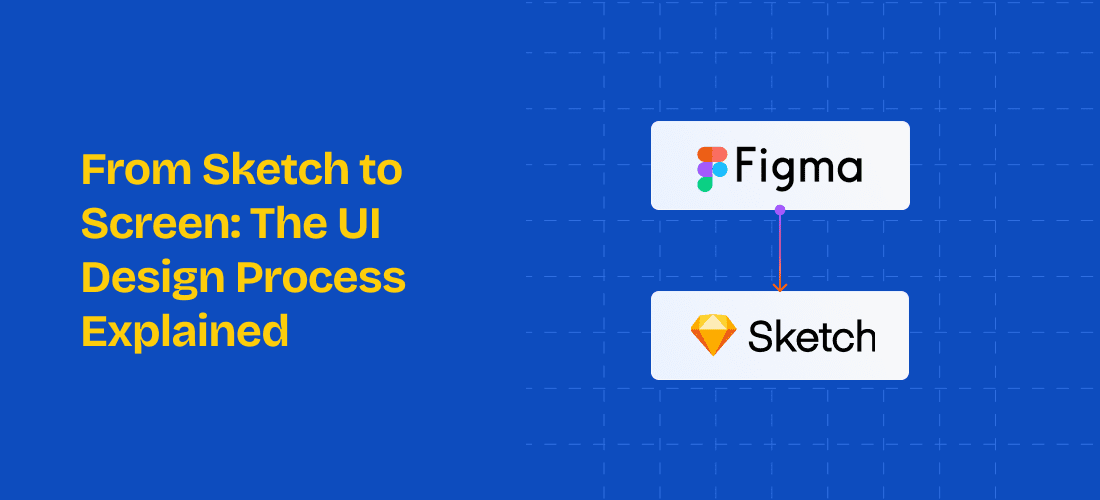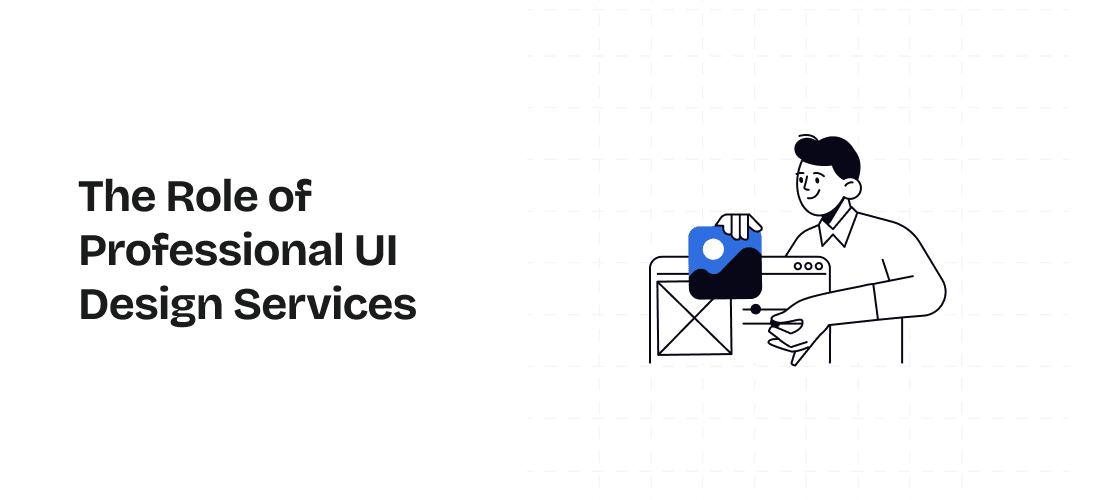
Dec 11, 2024

For any product – whether digital or physical, first impressions are paramount. Users make decisions about using your product based on their experience with it. No matter how innovative your product is, users are unlikely to engage with it if they find it difficult to navigate or visually unappealing.
This is where UI design comes into play. User Interface (UI) design is at the heart of every successful digital product, whether a mobile app, a website, or a software application. A well-crafted UI enhances the visual appeal of a product and ensures that users can interact with it seamlessly and intuitively.
Here, we will explore the UI design process in detail, from the initial brainstorming sessions to the final product launch. We’ll also discuss the role of professional UI design services in bringing your vision to life.

UI design is the process of creating visual elements and interactive components of a digital product. It’s about making the user’s interaction with the product as simple and efficient as possible.
The UI design process is a multi-step journey that transforms a basic idea into a polished, user-friendly interface. It involves everything from conceptual sketches and wireframes to high-fidelity prototypes and user testing. The journey from sketch to screen combines creativity, strategy, and technical expertise.
The UI design process is a structured approach designers follow to create a functional and visually engaging interface. While the specifics may vary depending on the project and the designer’s approach, the process generally involves the following key stages:
Before diving into design, it’s essential to understand the project’s goals, the target audience, and the competition. The research and discovery phase is the foundation of the UI design process. It involves gathering information, identifying user needs, and defining the project’s scope.
The insights gathered during this phase serve as a roadmap for the entire design process. Professional UI design services use this information to create user personas, define user journeys, and establish UX design principles that will guide the project.
Once the research is complete, the next step is to start visualizing the interface. Sketching and wireframing are essential parts of the UI design process that help designers conceptualize the layout and structure of the product.
Wireframing is a crucial step in the UI design process, as it helps to establish the structure and flow of the interface before moving on to more detailed design work. It also provides a visual reference for stakeholders, allowing them to provide feedback and make informed decisions early in the process.
With the wireframes in place, the next stage of the UI design process is visual design. This is where the interface begins to take shape, with designers adding colors, typography, imagery, and other visual elements to create a cohesive and aesthetically pleasing design.
During the visual design phase, professional UI design services focus on creating a design that not only looks good but also enhances usability. This involves striking the right balance between aesthetics and functionality, ensuring that the interface is both visually appealing and easy to navigate.
Prototyping is the process of creating an interactive model of the interface that simulates the user experience. Prototypes allow designers to test the design’s functionality and usability before moving on to development.
Prototyping is an essential part of the UI design process, as it allows designers to test the design in a real-world context and make necessary adjustments before development begins. Professional UI design services use prototyping tools such as InVision, Adobe XD, or Figma to create realistic simulations of the interface.
Once the design is finalized, the next step is to prepare the design assets for development. The development handoff is the process of transferring the design files, specifications, and guidelines to the development team.
The development handoff is a critical stage in the UI design process, as it ensures that the design is accurately translated into a functional product. Professional UI design services typically use design collaboration tools like Zeplin or Figma’s handoff features to streamline this process.
With the design assets in hand, the development team begins the process of building the interface. During this stage, it’s important to conduct ongoing testing to ensure that the design is implemented correctly and functions as intended.
Professional UI design services often provide ongoing support during the implementation phase, working closely with the development team to address any challenges and ensure that the final product meets the design specifications.
After testing and refinement, the final stage of the UI design process is the launch of the product. However, the process doesn’t end there—post-launch support is crucial for ensuring the long-term success of the interface.
The launch and post-launch phases are critical for maintaining user satisfaction and ensuring the long-term success of the product. Professional UI design services often provide post-launch support to address any issues that arise and make necessary updates based on user feedback.

Navigating the UI design process can be challenging, especially for businesses and individuals without a background in design. Professional UI design services play a crucial role in guiding clients through each stage of the process, from initial research and sketching to final implementation and launch.
Also Read – 10 AI Powered Tools for UI UX Design
From initial research and sketching to visual design, prototyping, and final implementation, each stage plays a crucial role in the UI design process, ensuring the product’s success. Understanding this process is essential for businesses and individuals looking to create a digital product that stands out in today’s competitive market.
Professional UI design services are invaluable partners in this journey, providing the expertise, experience, and support needed to bring your vision to life. By guiding you through each stage of the process and ensuring that the final product meets the highest design and functionality standards, these services help you create an interface that looks great while delivering an exceptional user experience.